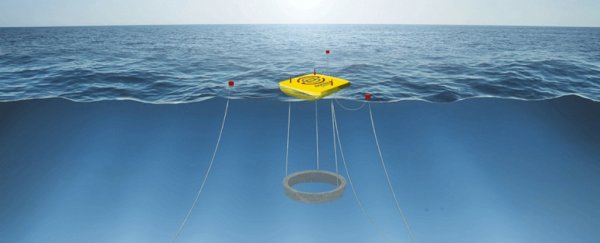Humanity is obsessed with the sea. Maybe it's because it's an environment that we're simply not meant to survive in, like space. Or, maybe it's because we feel small when we look at it from the coastline. But the one undeniable thing about the ocean is that it's powerful - much more powerful than any one person.
That all sounds pretty poetic, but humanity might soon benefit from the vast power of the ocean by harnessing it with a new device called the Triton, and with over 332,519,000 cubic miles (that's 1,385,999,652.41 cubic kilometres) of ocean water, you can bet there's a lot of energy moving around out there in the form of waves.
To harness all that potential energy, researchers from Oscilla Power - a US-based renewable energy company - came up with a device that contains a series of generators and floats on top of the ocean's surface. The whole thing is kept in place by underwater cables.
"As waves interact with the device, there is an alternating magnetic polarity created in the metal that is used to generate electricity," reports Meagan Parrish for ChemInfo.
The team explains that the Triton will not use any moving parts to collect energy, which makes it perfect for ocean use where waves will undoubtedly knock it all over the place.
In fact, the researchers are counting on it moving, because that's basically how it generates power. As they put it, energy is captured "by the use of flexible tethers, themselves enabled by an asymmetric heave plate, Triton uniquely captures energy from heave, pitch, sway and roll motions".
Right now, the Triton is undergoing small-scale trials to ensure that it can handle the large jostling it's going to receive in the real ocean. Though it's still very early, reports indicate that if the team is successful in their design, Triton could provide up to a third of America's power and about 15 percent of global demand.
Exactly how much power is that, though? The team says each one of their Tritons could produce 600kW of power, while the average household in the US consumes roughly 911kWh (1.26kW) each month. That's about 500 houses with a single unit, which is way better than an entire wind turbine.
Now that's a significant amount of power. The only question is whether or not the device will really pan out the way researchers are envisioning it. Fingers crossed.
